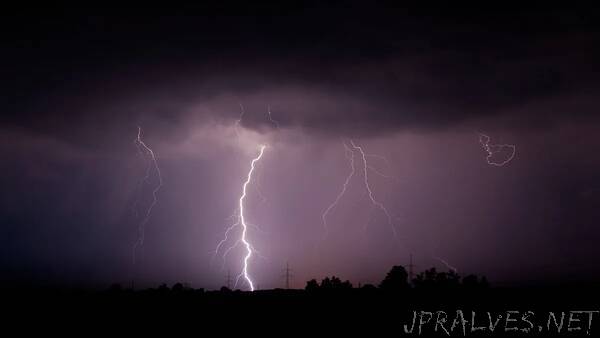
“A new approach enables meter-scale localization of lightning strikes. And it’s already illuminating the basic physics of the phenomenon.
Studying lightning is as hard as you might expect.
One promising technique to study the ephemeral surges is to measure the radio waves generated by a lightning event using an array of antennas. This technique, called radio-frequency interferometry, has been around since the late 20th century. In prior work, for example, researchers integrated this method with polarized antennas to pinpoint the angular position of a strike and to detect the polarization state of the incoming radio waves.
Still, this method can only localize a lightning strike and detect its polarization in two dimensions. That limitation prevents scientists from answering fundamental questions, such as where and how lightning starts in a cloud and how quickly different discharge processes occur.
In a new study, Shao et al. extended radio-frequency interferometry and polarization detection to three dimensions. Adding a third dimension could resolve these long-standing problems in lightning physics.
Their second-generation BIMAP-3D (Broadband Interferometric Mapping and Polarization in 3D) system utilizes two observation stations. These stations, which are separated by 11.5 kilometers, each consist of four sets of broadband and polarized antennas arranged in a Y shape. By using both stations simultaneously, scientists can map lightning and detect polarization in three dimensions.
The authors describe two techniques for triangulating the path of a lightning strike by combining data from the two stations: one based on geometry and the other based on time of arrival. They can integrate these two analyses for accurate triangulation.
Under favorable conditions, the researchers could pinpoint a lightning strike’s source location to within several meters at an altitude of kilometers aboveground. What’s more, they could track the development of lightning within fractions of a microsecond.
The team then applied their new instrumentation and analysis techniques to several observed lightning strikes. They computed 3D maps showing the shape and development of each lightning event, including both cloud-to-cloud and cloud-to-ground events. They even demonstrated that for events with linear polarization, BIMAP-3D can deduce the orientation of the radio polarization in three dimensions.
These novel capabilities, the authors say, expand the horizon of what’s possible in the study of lightning physics. (Journal of Geophysical Research: Atmospheres, https://doi.org/10.1029/2022JD037955, 2023)”
